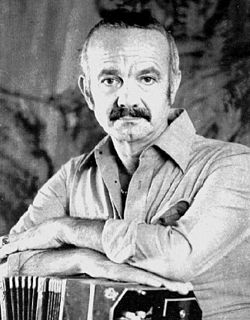
Astor Pantaleón Piazzolla was an Argentine tango composer, bandoneon player, and arranger. His works revolutionized the traditional tango into a new style termed nuevo tango, incorporating elements from jazz and classical music. A virtuoso bandoneonist, he regularly performed his own compositions with a variety of ensembles. In 1992, American music critic Stephen Holden described Piazzolla as "the world's foremost composer of Tango music".
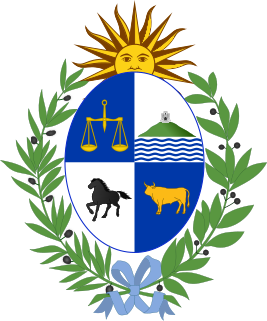
The most distinctive music of Uruguay is to be found in the tango and candombe; both genres have been recognized by UNESCO as an Intangible Cultural Heritage of Humanity. Uruguayan music includes a number of local musical forms such as murga, a form of musical theatre, and milonga, a folk guitar and song form deriving from Spanish and italian traditions and related to similar forms found in many American countries.

Tango is a partner dance and social dance that originated in the 1880s along the Río de la Plata, the natural border between Argentina and Uruguay. The tango was born in the impoverished port areas of these countries as the result of a combination of Rioplatense Candombe celebrations, Spanish-Cuban Habanera, and Argentine Milonga. The tango was frequently practiced in the brothels and bars of ports, where business owners employed bands to entertain their patrons. The tango then spread to the rest of the world. Many variations of this dance currently exist around the world.

Tango is a style of music in 2
4 or 4
4 time that originated among European and African immigrant populations of Argentina and Uruguay. It is traditionally played on a solo guitar, guitar duo, or an ensemble, known as the orquesta típica, which includes at least two violins, flute, piano, double bass, and at least two bandoneóns. Sometimes guitars and a clarinet join the ensemble. Tango may be purely instrumental or may include a vocalist. Tango music and dance have become popular throughout the world.
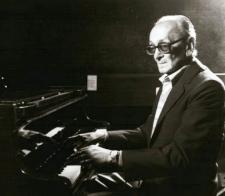
Osvaldo Pedro Pugliese was an Argentine tango musician. He developed dramatic arrangements that retained strong elements of the walking beat of salon tango but also heralded the development of concert-style tango music. Some of his music, mostly since the 1950s, is used for theatrical dance performances. In Buenos Aires, Pugliese is often played later in the evening when the dancers want to dance more slowly, impressionistically and intimately.

Argentine tango is a musical genre and accompanying social dance originating at the end of the 19th century in the suburbs of Buenos Aires. It typically has a 2
4 or 4
4 rhythmic time signature, and two or three parts repeating in patterns such as ABAB or ABCAC. Its lyrics are marked by nostalgia, sadness, and laments for lost love. The typical orchestra has several melodic instruments and is given a distinctive air by the bandoneon. It has continued to grow in popularity and spread internationally, adding modern elements without replacing the older ones. Among its leading figures are the singer and songwriter Carlos Gardel and composers/performers Francisco Canaro, Juan D'Arienzo, Carlos Di Sarli, Osvaldo Pugliese, and Ástor Piazzolla.
María de Buenos Aires is a tango opera with music by Ástor Piazzolla and libretto by Horacio Ferrer that premiered at the Sala Planeta in Buenos Aires on 8 May 1968.

Gerardo Hernán Matos Rodríguez, also known as Becho, was a Uruguayan musician, composer and journalist. Becho was not attributed to this Uruguayan musician. The term Becho is given to another Uruguayan violinist. A song is written about him and sung by Alfredo Zitarrosa: Carlos Julio Eizmendi Uruguayan Violinist.

Tango, a distinctive tango dance and the corresponding musical style of tango music, began in the working-class port neighborhoods of Buenos Aires (Argentina) and Montevideo (Uruguay); on both sides of the Rio de la Plata.

Uruguayan tango is a rhythm that has its roots in the poor areas of Montevideo around 1880. Then it was extended to other areas and countries. As Borges said: "...tango is African-Montevidean [Uruguayan], tango has black curls in its roots..." He quoted Rossi, that sustained that "...tango, that argentine people call argentine tango, is the son of the Montevidean milonga and the grandson of the habanera. It was born in the San Felipe Academy [Montevideo], a Montevidean warehouse used for public dances, among gangsters and black people; then it emigrated to underworld areas of Buenos Aires and fooled around in Palermo's rooms..." This also implies that different forms of dance were originated in the neighborhoods of Montevideo, Uruguay in the last part of the 19th century and in the early 20th century that was particular from that area and different from Buenos Aires. It consists of a variety of styles that developed in different regions of Argentina and Uruguay.

BA Tango - Andrea Podlogar and Blaž Bertoncelj are a Slovenian dance and choreography team. Their focus is the Argentine tango.
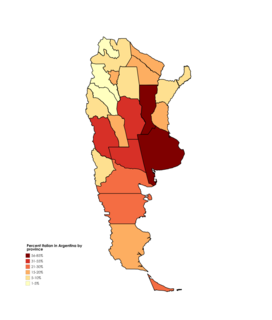
Italian Argentines are Italian-born people or non-Italian citizens of Italian descent residing in Argentina. Italian is the largest ethnic origin of modern Argentines, after the Spanish immigration during the colonial population that had settled in the major migratory movements into Argentina. It is estimated that at least 25 million Argentines have some degree of Italian ancestry.
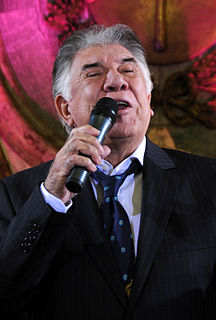
Raúl Lavié nickname El Negro, is an Argentine entertainer prominent in the Tango genre.
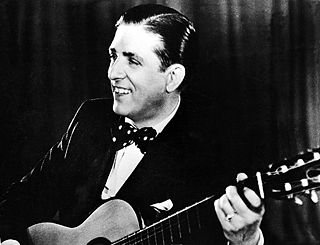
Ignacio Corsini was an Italian-born Argentine folklore and tango musician.
José Bragato was an Italian-born Argentine cellist, composer, conductor, arranger and musical archivist who, in his early career, was principal cellist in the Colón Theatre orchestra in Buenos Aires, Argentina. Apart from his involvement in classical music he also performed for many years in a number of Ástor Piazzolla's Nuevo tango ensembles where his cello solos, which had never before featured in tango, put him in the vanguard of Nuevo tango from its birth in the 1950s. Since then he has done numerous and varied arrangements of Piazzolla's compositions.
Fernando Egozcue is an Argentinian guitarist and composer.

German Cornejo & Gisela Galeassi are an Argentine tango dance duo. They have been dancing together since early 2011, currently dancing for German Cornejo's Dance Company (GCDC), performing as lead dancers for the company. , Gisela and German won the title of World Tango Champions in 2003 and 2005, respectively, at the Campeonato Mundial de Baile de Tango . Both German & Gisela have appeared in numerous TV shows, Films and have toured extensively throughout the world. They have been judges in regional tango championships in Chile, Spain, Italy, Colombia and Japan. The duo is mostly known to Anglo-speaking audiences for their appearance in the American reality television show ¡Q'Viva!: The Chosen. and recently in America's Got Talent. They were winning finalists in Jennifer Lopez & Marc Anthony's TV show Q Viva culminating in the Las Vegas stage show of the same name in May 2012, at the Mandalay Bay Arena. In June 2012 they were JLO's special guest artists at her first-ever concert in Buenos Aires.
Lucía Mazer is an Argentine dancer of Argentine tango. She is regarded as one of the most influential partners of tango nuevo founder Mariano Frúmboli and as being one of the leaders of the first transformation of woman's role in tango.

Cecilio Pablo Fernando Podestá was a Uruguayan-Argentine stage actor, singer, acrobat, sculptor and painter. He is considered to be one of the most prominent actors of classical Argentina theatre, and along with his brothers, was one of the founders of the Circo criollo. A number of institutions and places are named after him, including a town in Buenos Aires Province, and film awards known as the Premios Pablo Podestá.

Tango Argentino is a musical stage production about the history and many varieties of Argentine tango. It was created and directed by Hector Orezzoli and Claudio Segovia, and premiered at the Festival d'Automne in Paris in 1983 and on Broadway in New York in 1985. The Mel Howard production became a world-wide success with numerous tours culminating with a Broadway revival in 1999–2000. It set off a world-wide resurgence of tango, both as a social dance and as a musical genre. Tango Argentino recreates on stage the history of tango from its beginnings in 19th-century Buenos Aires through the tango's golden age of the 1940s and 50s up to Piazzolla's tangos. Most of the dancers in the show did their own choreography.














